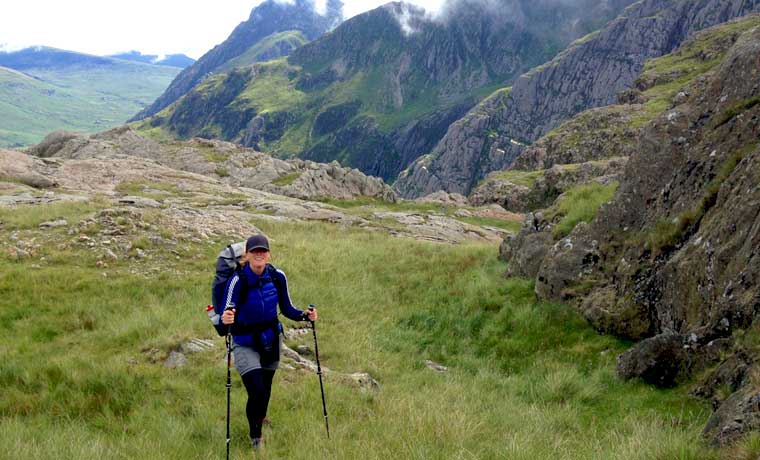Walking poles are long lightweight poles created to help walkers. They are usually in several sections and extend from a packed size of around 60cm up to around 140cm depending on the pole. Many people use a pair of walking poles in an action similar to a cross-country skier. Normal walking poles are used by walkers all over the countryside from gentle country rambles to high mountain adventures. For many people, walking poles make a long walk easier. Some people find that walking poles ease pressure on their knees, especially when descending hills. As a general rule, walking poles transfer some of your load from your legs to your arms and mean that the work in a walk is carried by your whole body, not just your legs.
Advantages and uses of walking poles:
People carrying a heavy rucksack use walking poles both as a way of redistributing the weight and also as a way to help with balance on tricky sections. Balance is a reason for many people to use walking poles or crampons. Tricky or muddy path sections, low angled snow or even river crossings can be made a lot easier if you have your trusty poles to rely on. The use of walking poles is fairly self-explanatory but there are a few extra tips that might make using your poles easier. One goes in each hand and place each pile in front of you in time with the opposite foot, or as necessary. Everyone develops their own rhythm with them. When going uphill you tend to shorten your poles so that you are not having to reach too high up to plant them, rendering you off-balance.
Disadvantages to walking poles:
It is not all good news with poles. Transferring load through the poles to your arms means that you will have tired arms and shoulders at the end of a long walk, not just tired legs. Some people get sore wrists with walking poles, though this can often be overcome with the correct use of the wrist straps. In deep undergrowth such as heather or long grass, poles can become snagged. Some walkers rely on their poles well above the snow line when it would be safer if they were carrying an ice axe, hence they become a safety liability. On heavily worn trails, poles are required to have a rubber foot put on them to stop erosion.

